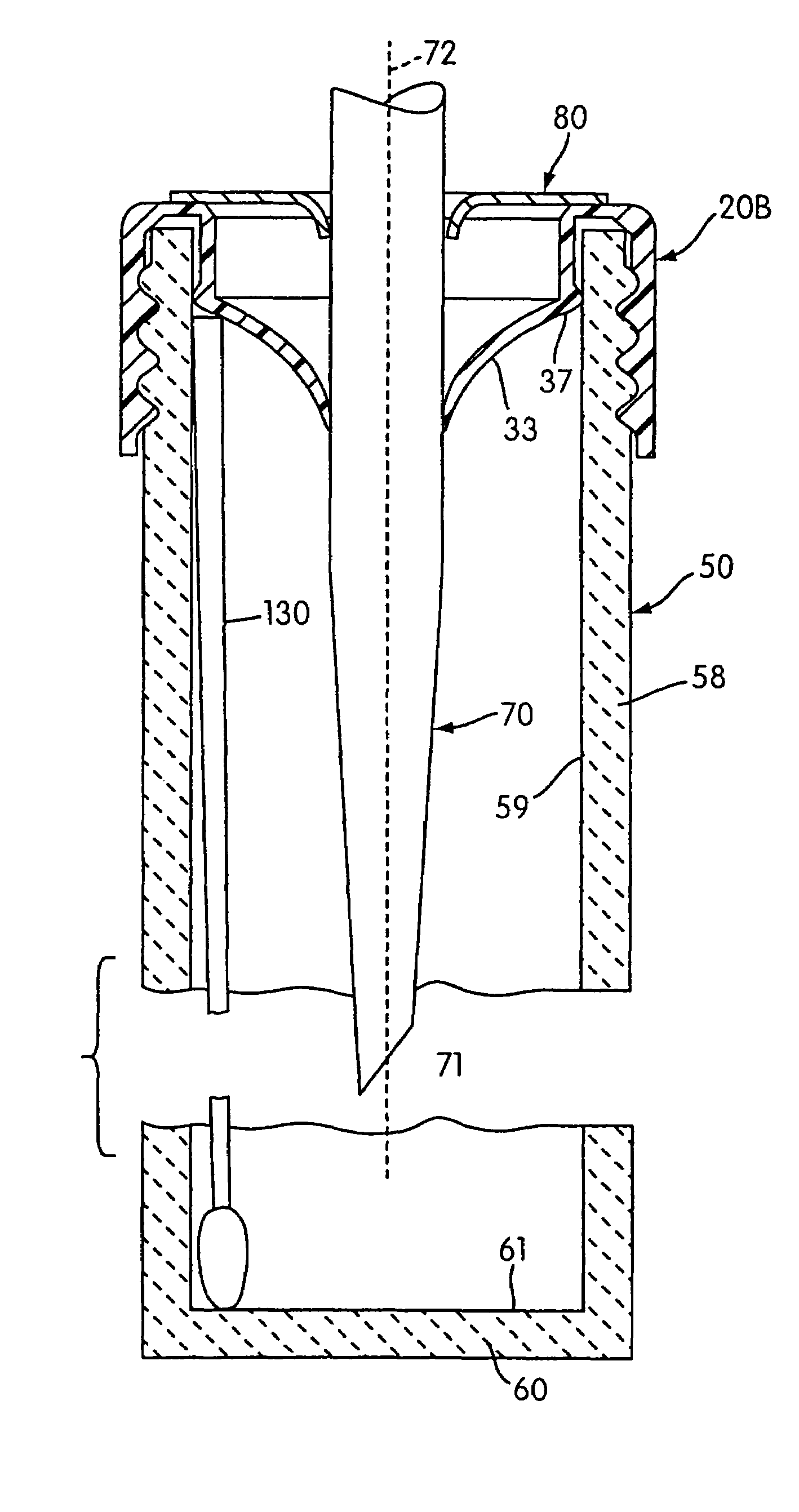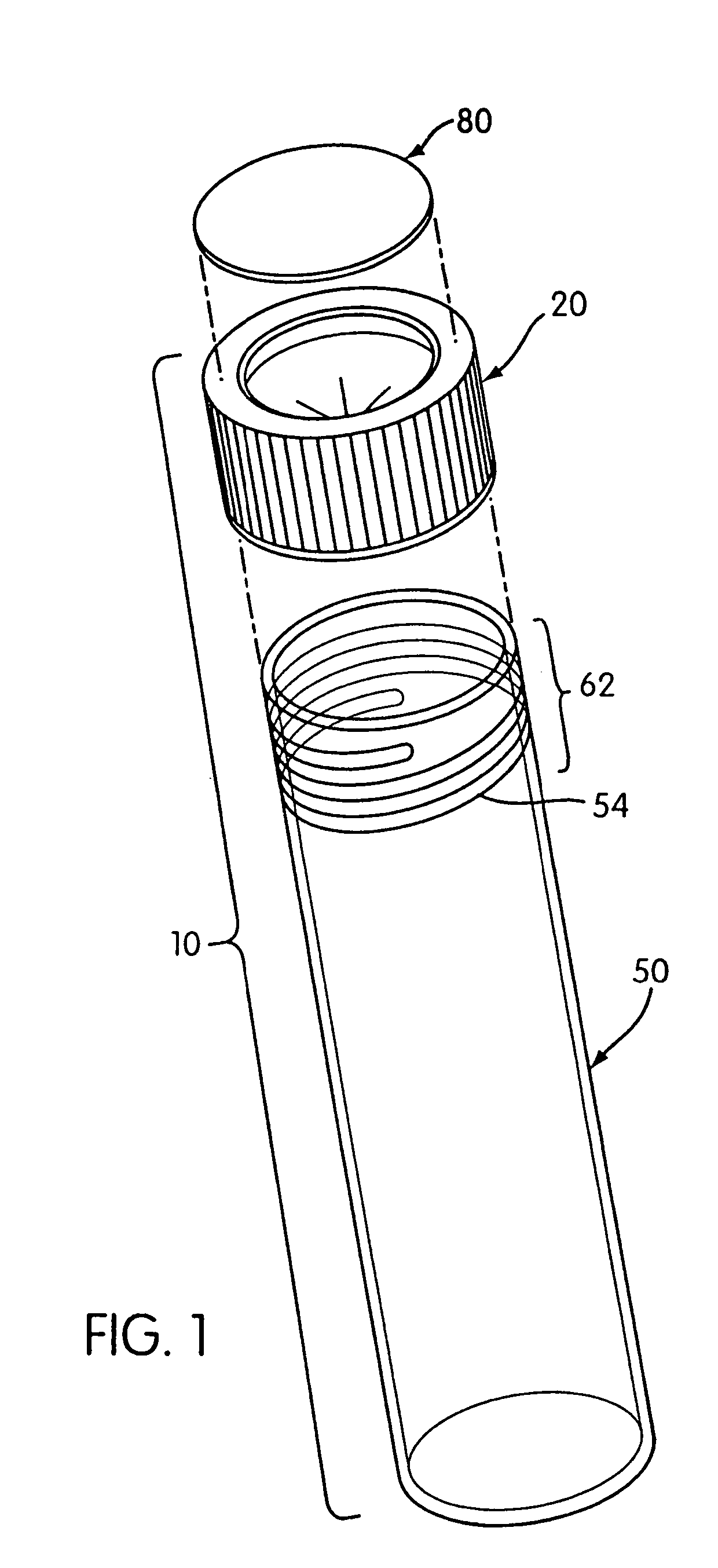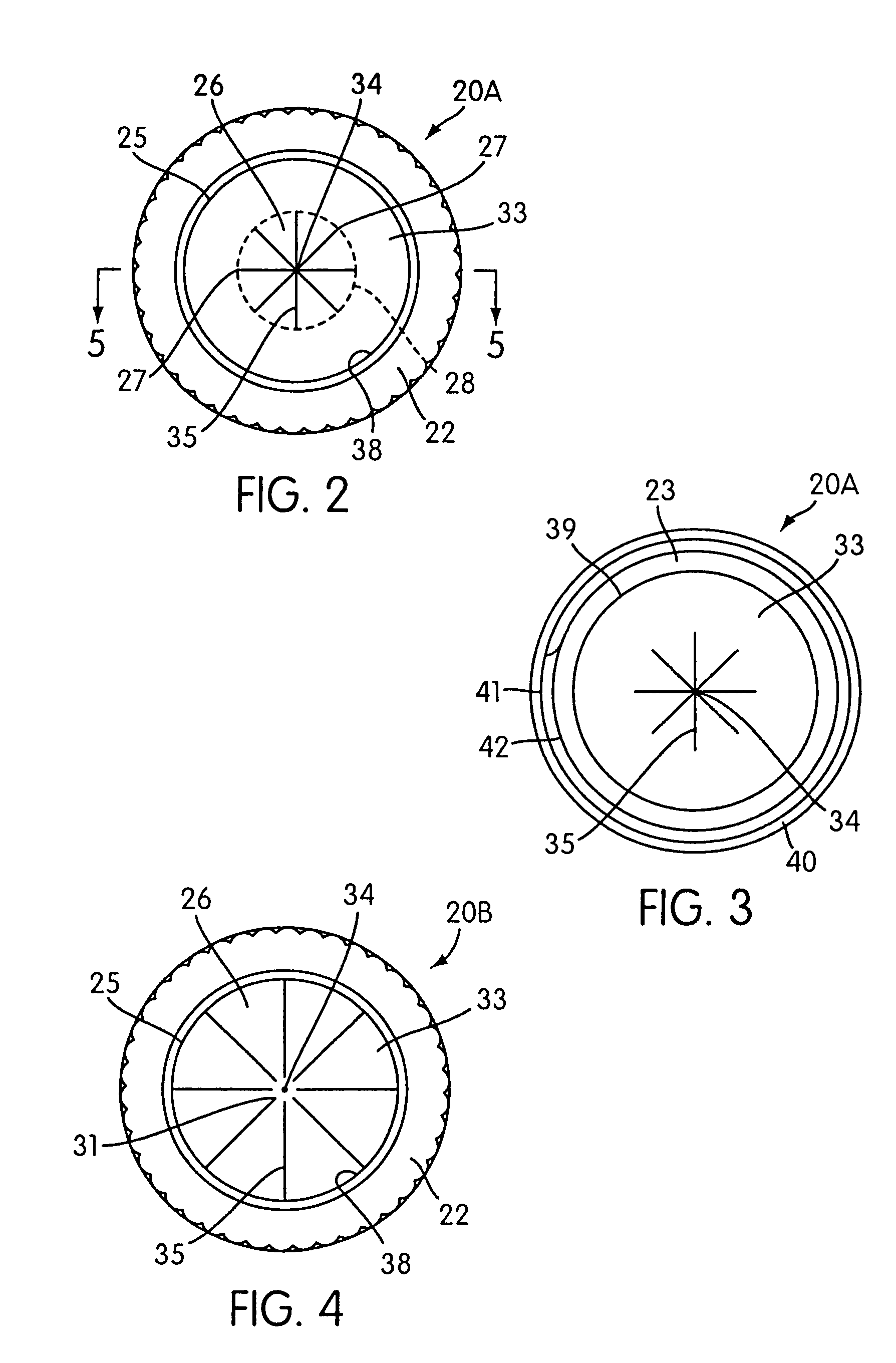Collection device
a collection device and cap technology, applied in the field of caps, can solve the problems of false positives, another opportunity for contamination, and exposure of practitioners to harmful pathogens present in fluid samples, so as to improve the volume accuracy of fluid samples, reduce frictional forces, and improve volume accuracy
- Summary
- Abstract
- Description
- Claims
- Application Information
AI Technical Summary
Benefits of technology
Problems solved by technology
Method used
Image
Examples
example
[0127]To determine the amount of force needed to penetrate a cap 20A-C of the present invention, a Universal Tension / Compression Tester (“Compression Tester”), Model No. TCD 200, and a force gauge, Model No. DFGS-50, were obtained from John Chatillon & Sons, Inc. of Greensboro, N.C. Because the Compression Tester is an automated instrument, it allows for greater reproducibility when determining the compression needed to penetrate a cap that may not be possible following a purely manual approach.
[0128]All caps 20A-C used in this test were made of HDPE and had a substantially uniform thickness of between about 0.0109 inches (0.277 mm) and about 0.0140 inches (0.356 mm), except in the region of the striations 35. The depth of the conical inner wall 33 of the cap 20A-C was about 0.29 inches (7.37 mm) as measured along the longitudinal axis 30 of the cap from the plane of the outer circumference 38 of the conical inner wall 33 to the apex 34 of the same. The diameter of the outer circumf...
PUM
 Login to View More
Login to View More Abstract
Description
Claims
Application Information
 Login to View More
Login to View More - R&D
- Intellectual Property
- Life Sciences
- Materials
- Tech Scout
- Unparalleled Data Quality
- Higher Quality Content
- 60% Fewer Hallucinations
Browse by: Latest US Patents, China's latest patents, Technical Efficacy Thesaurus, Application Domain, Technology Topic, Popular Technical Reports.
© 2025 PatSnap. All rights reserved.Legal|Privacy policy|Modern Slavery Act Transparency Statement|Sitemap|About US| Contact US: help@patsnap.com



